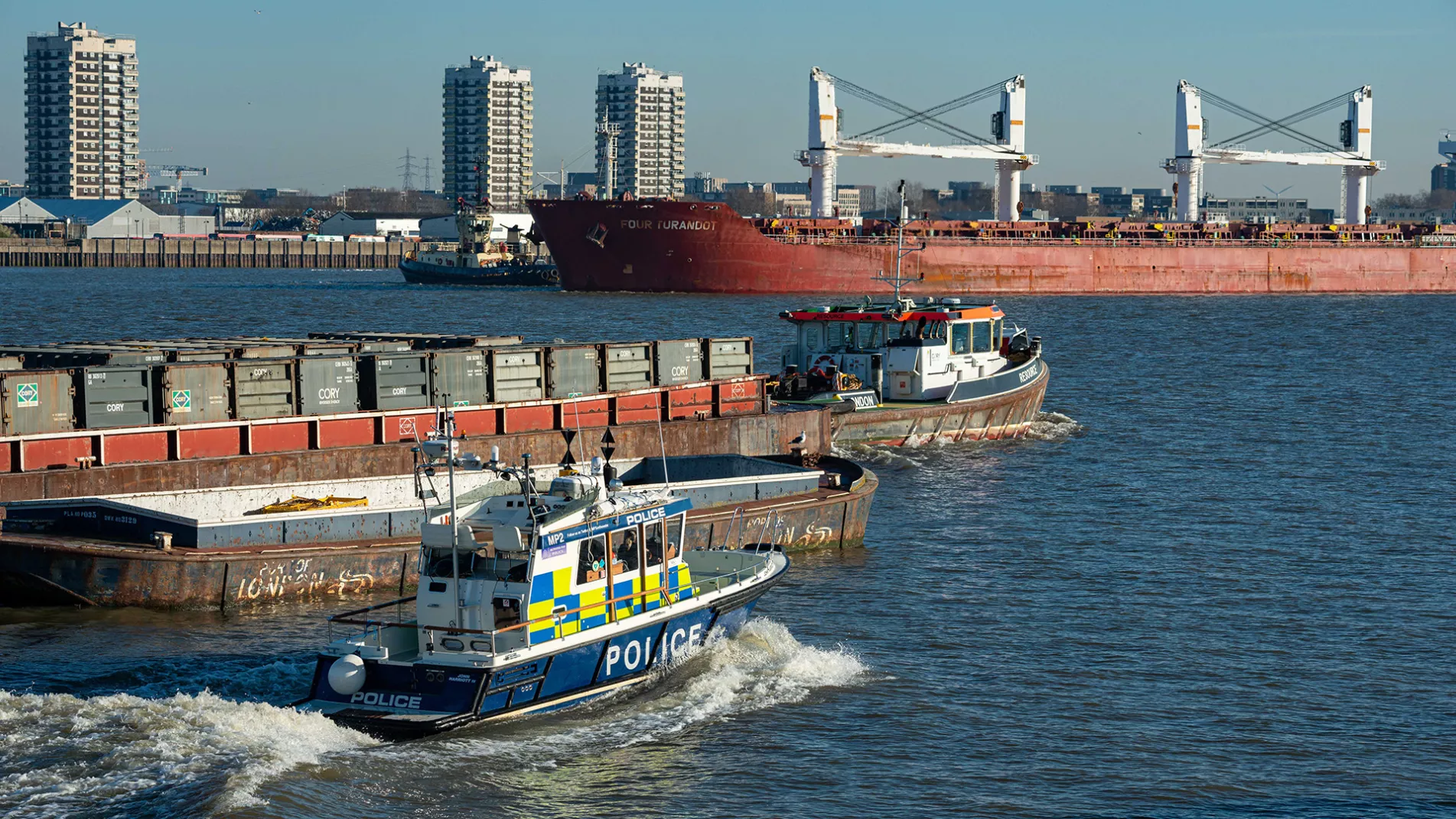Live Tides
NOTICES TO MARINERS
Charts & Surveys

Incident reporting
Life-threatening emergencies on the river:
Call 999 and ask for the Coastguard
For near miss, safety observations and incident reporting click below

Emergency planning
The PLA has responsibilities for 95 miles of the tidal River Thames from Teddington Lock to the outer port limits in the Thames Estuary
We work in partnership with those using the river for trade, travel, recreation and pleasure. Together we form a port that is the largest by volume in the UK.
Civil Contingencies
The Port of London Authority is a Category 2 responder under the Civil Contingencies Act 2004. In addition to supporting Category 1 responders, we will co-operate with other organisations in the planning, response and recovery for emergencies and support initiatives with implications for the tidal River Thames.
For further information on the Civil Contingencies Act 2004 please read the relevant legislation section of the UK government website.
Pollution
We have a responsibility to safeguard the marine environment, in particular under the Merchant Shipping Oil Preparedness, Response and Co-operation Convention (OPRC) regulations 1998. The PLA operates the Thames Oil Spill Clearance Association (TOSCA), a limited oil spill response capability, comprising of oil spill response vessels and equipment.
Emergency Response
Initial response: Activation of the PLA response should normally be via a call to the Duty port Controller at PCC or Duty Officer at TBNC. They will initiate action based on experience, supported by action sheets contained in the PLA Emergency Manual. Port Emergencies fall into two categories; Marine Incident and Major Incident.
On-going Response & Recovery: Following the initial notification, the response and subsequently the recovery, will be led by the relevant district Harbour Master.
Marine Incident: These are usually co-ordinated by the PLA, with routine assistance from the emergency services and other agencies as necessary. Any associated Search and Rescue element will be led by the Maritime & Coastguard agency – London or Dover Coastguard.
Major Incident: In common with the major incident definition of other agencies, this is an incident beyond the normal capacity of the PLA, requiring special arrangements for response, co-ordination and management in conjunction with other agencies.
Command and Control: We will establish a command and control structure for the PLA appropriate to the nature of the incident. For a Major Incident we will endeavour to provide Liaison Officers as required to ensure effective co-ordination at Strategic, Tactical and Operational locations.
Command and Control Facilities: We have the facilities to co-ordinate the PLA response at both the PCC and TBNC. These facilities can also accommodate partners’ Liaison Officers and multi-agency meetings, although there is limited capacity at TBNC.
Contacting the Port of London Authority in an emergency or an incident, that has implications for the tidal Thames
Port Control Centre (PCC) Duty Port Controller (24hr) (for matters east of Crayfordness) – 01474 562 215 or via VHF:
- VHF Channel 68 (Crayfordness – Sea Reach No. 4 Buoy)
- VHF Channel 69 (Sea Reach No. 4 Buoy – Outer Limits)
Thames Barrier Navigation centre (TBNC) Duty Officer (24hr) (for matters west of Crayfordness) – 020 3260 7711 or via VHF:
- VHF Channel 14 (Crayfordness – Teddington Lock)
The PCC leads on incidents linked to Essex and Kent, TBNC leads for London, but either can take an initial notification.
Contacting the Port of London Authority for routine emergency planning issues
For routine emergency planning, contingency management and resilience issues:
Call us: 01474 562266
Email us: [email protected]
Write to us: London River House, Royal Pier Road, Gravesend, Kent, DA12 2BG.
Discover


